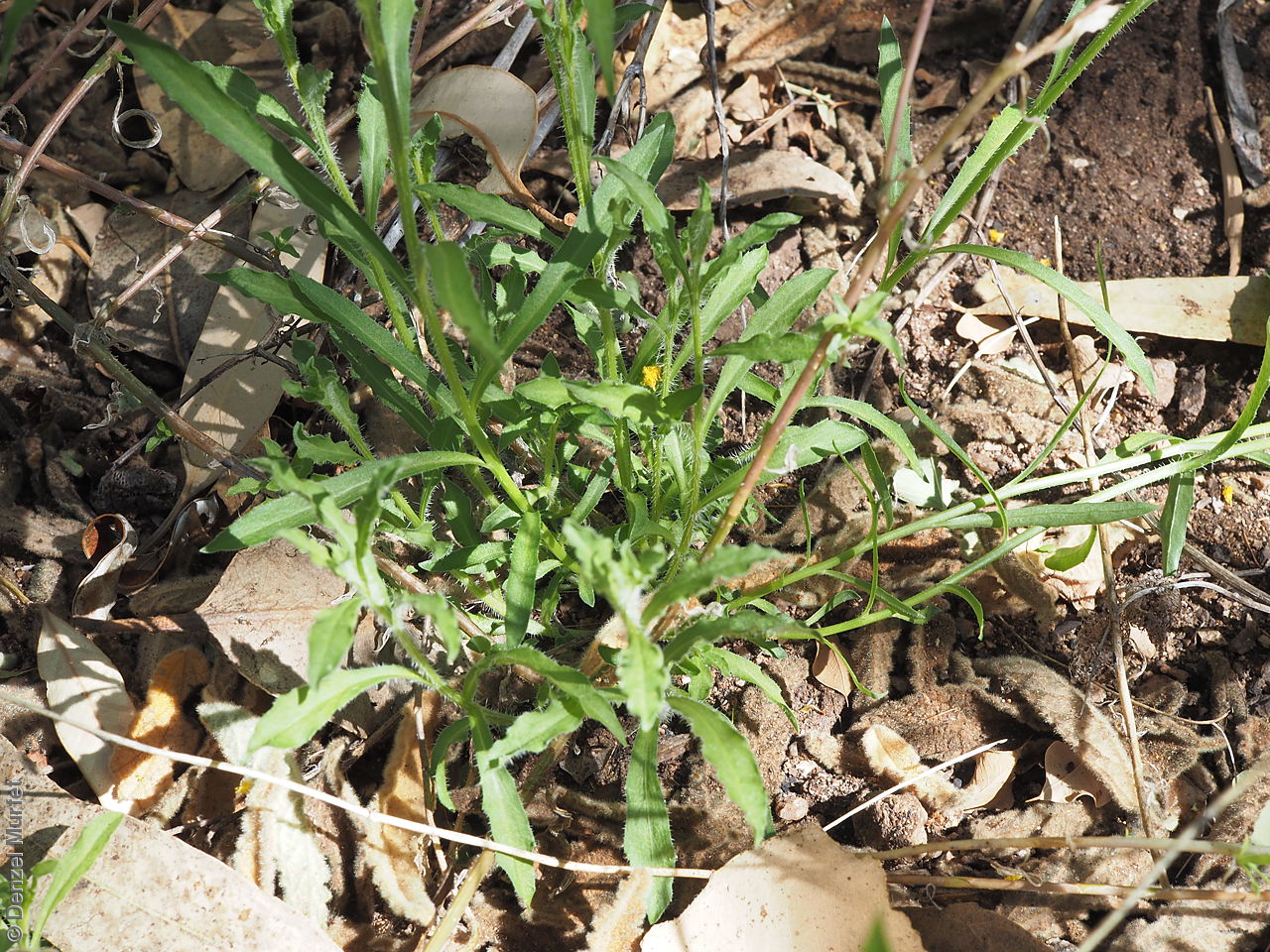
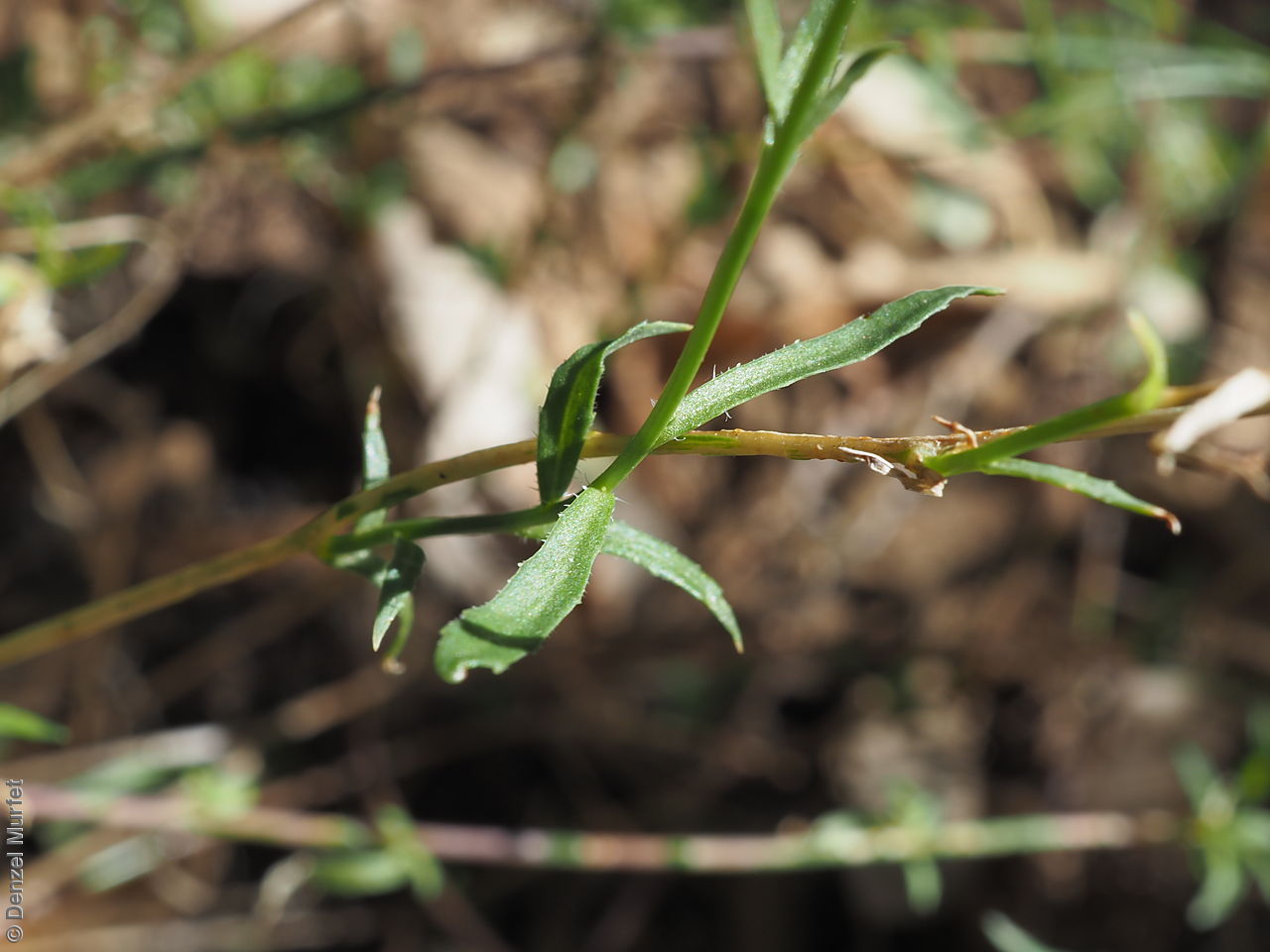
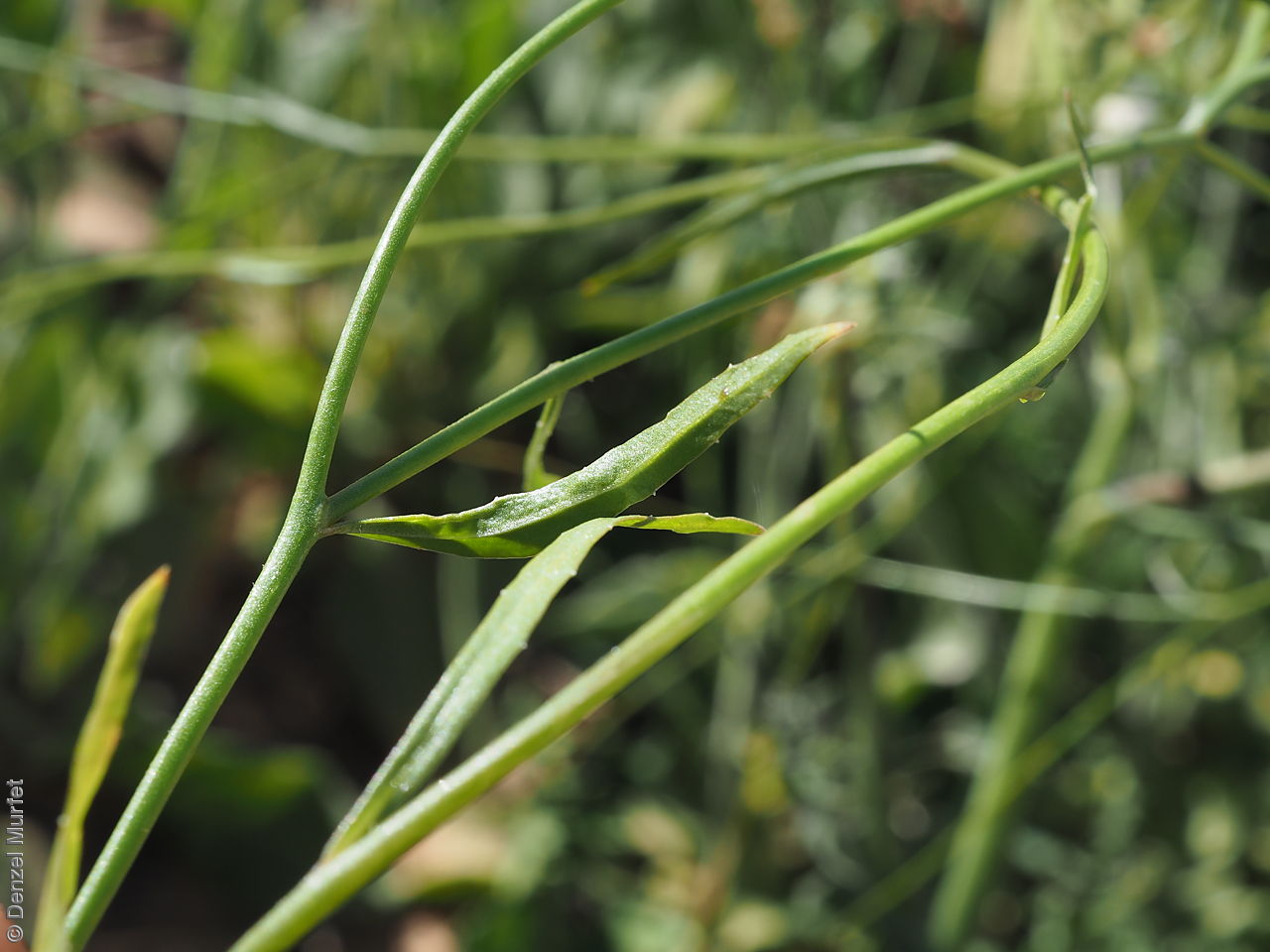
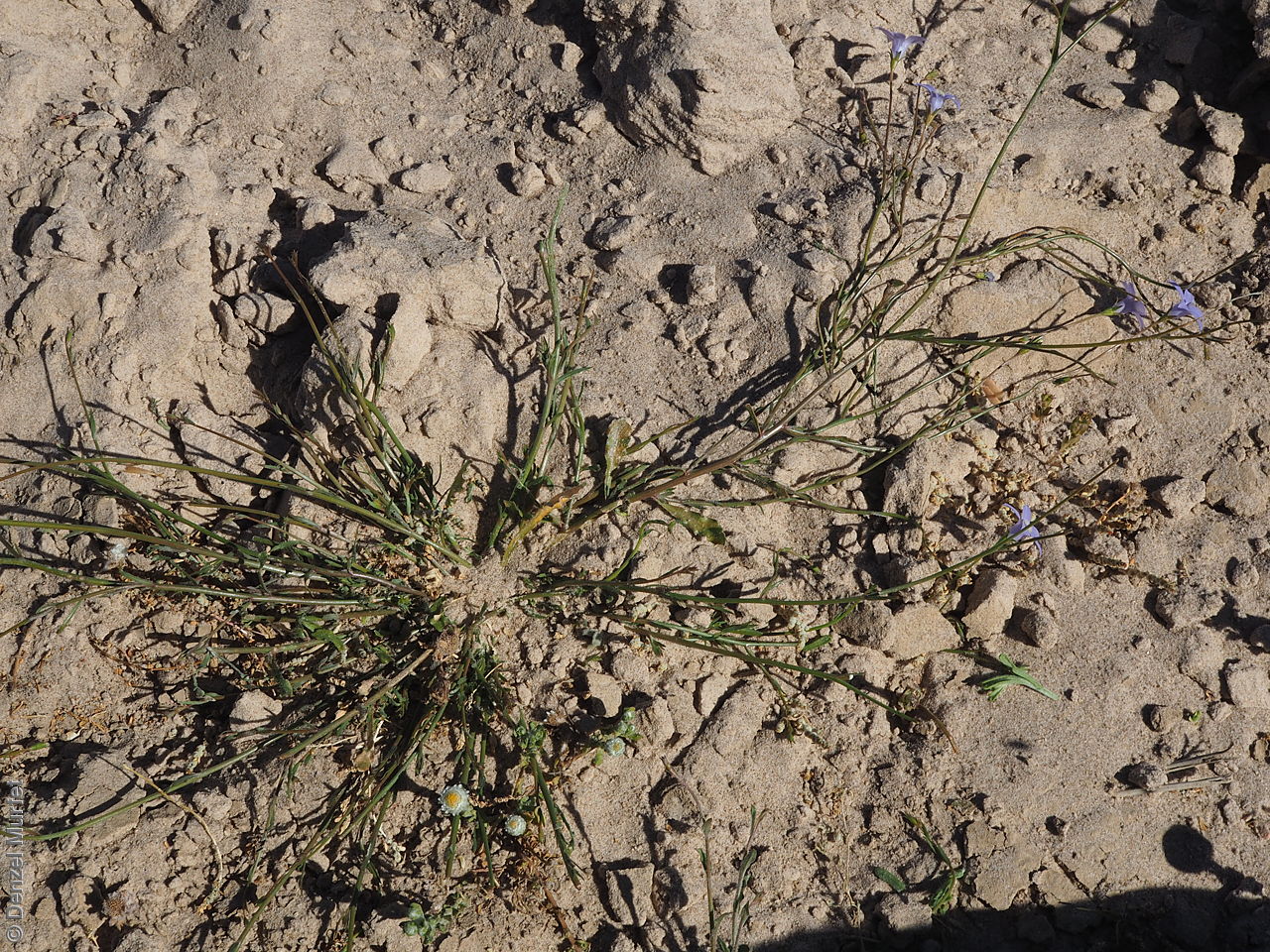
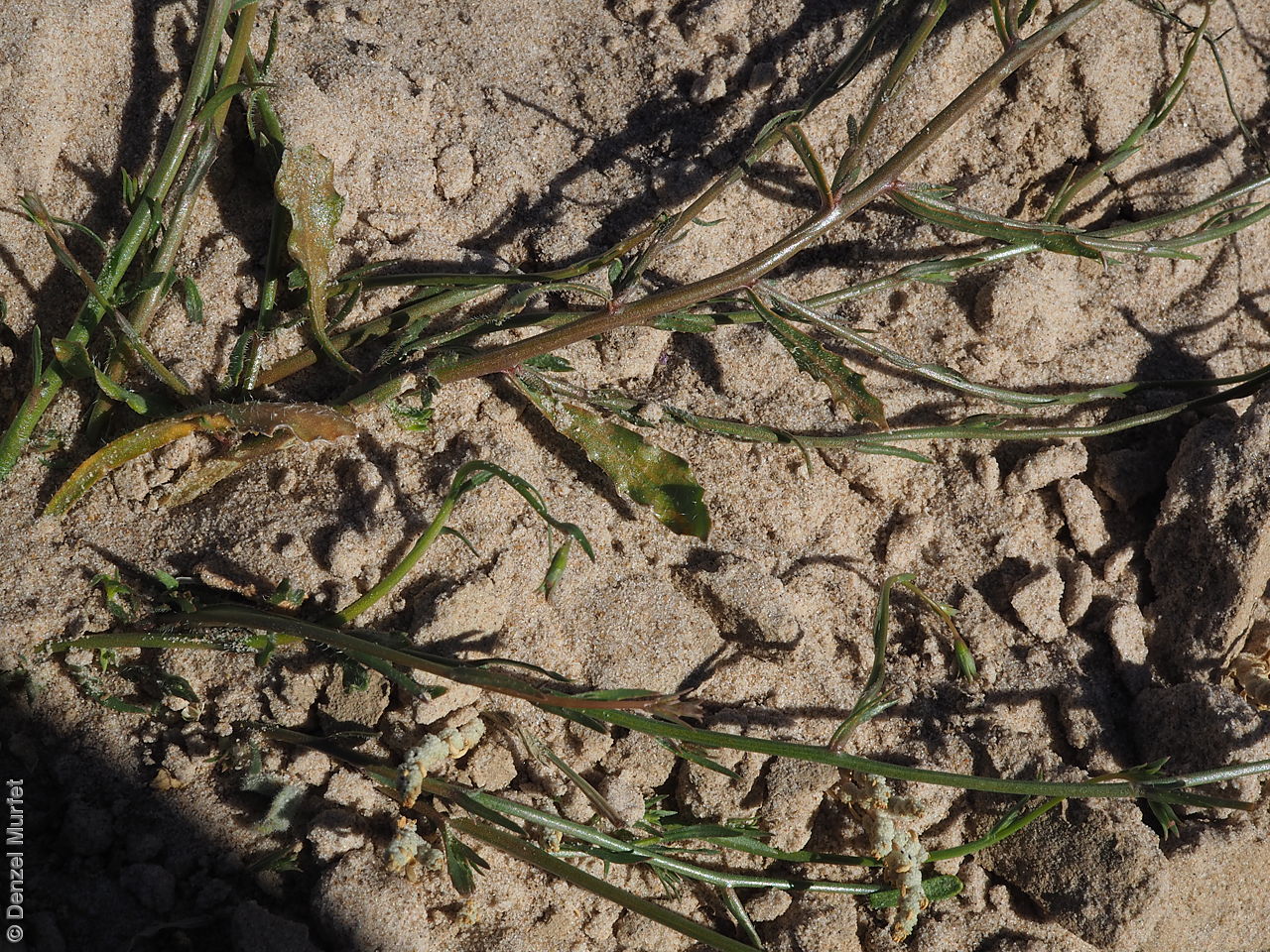
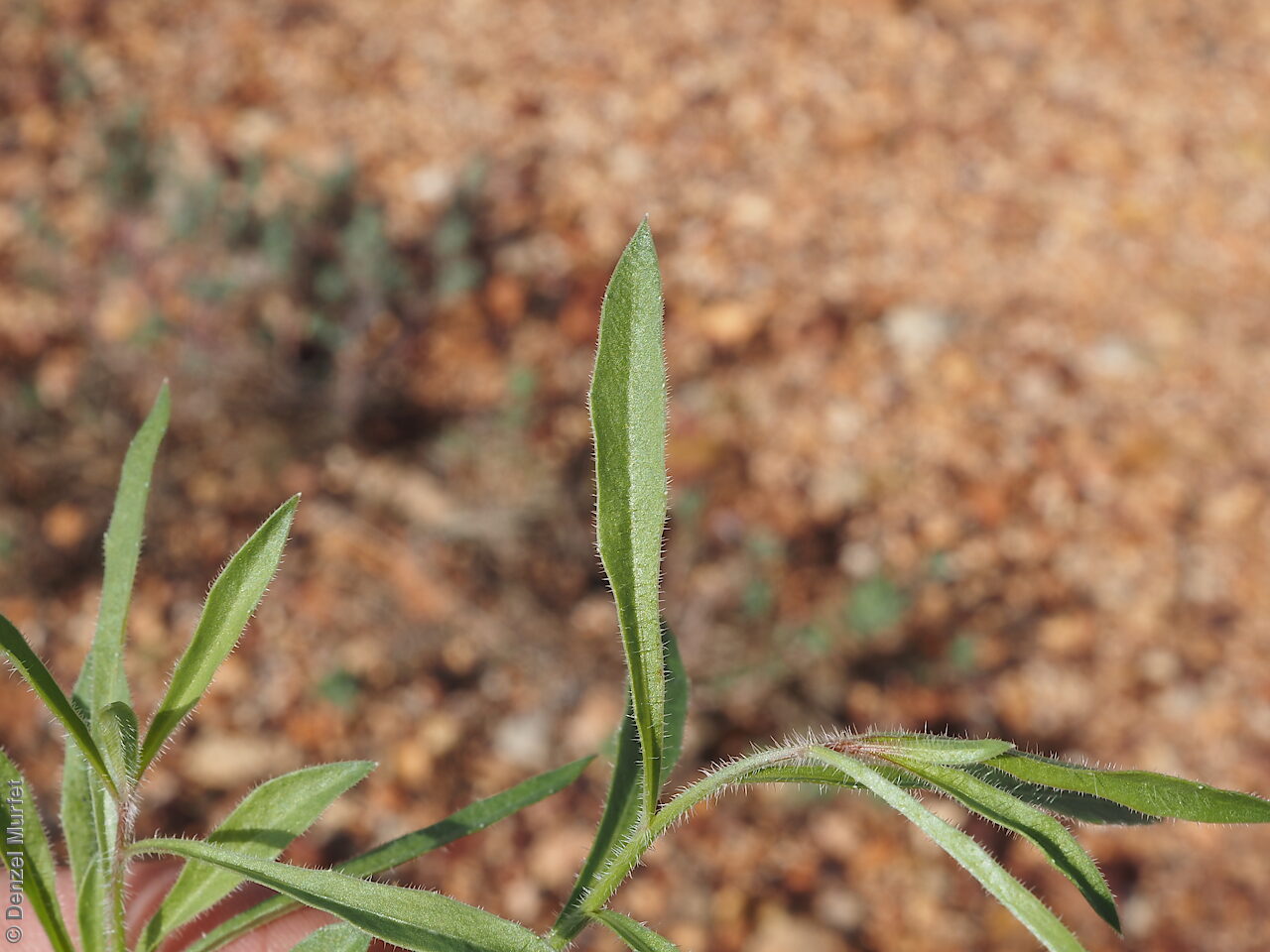
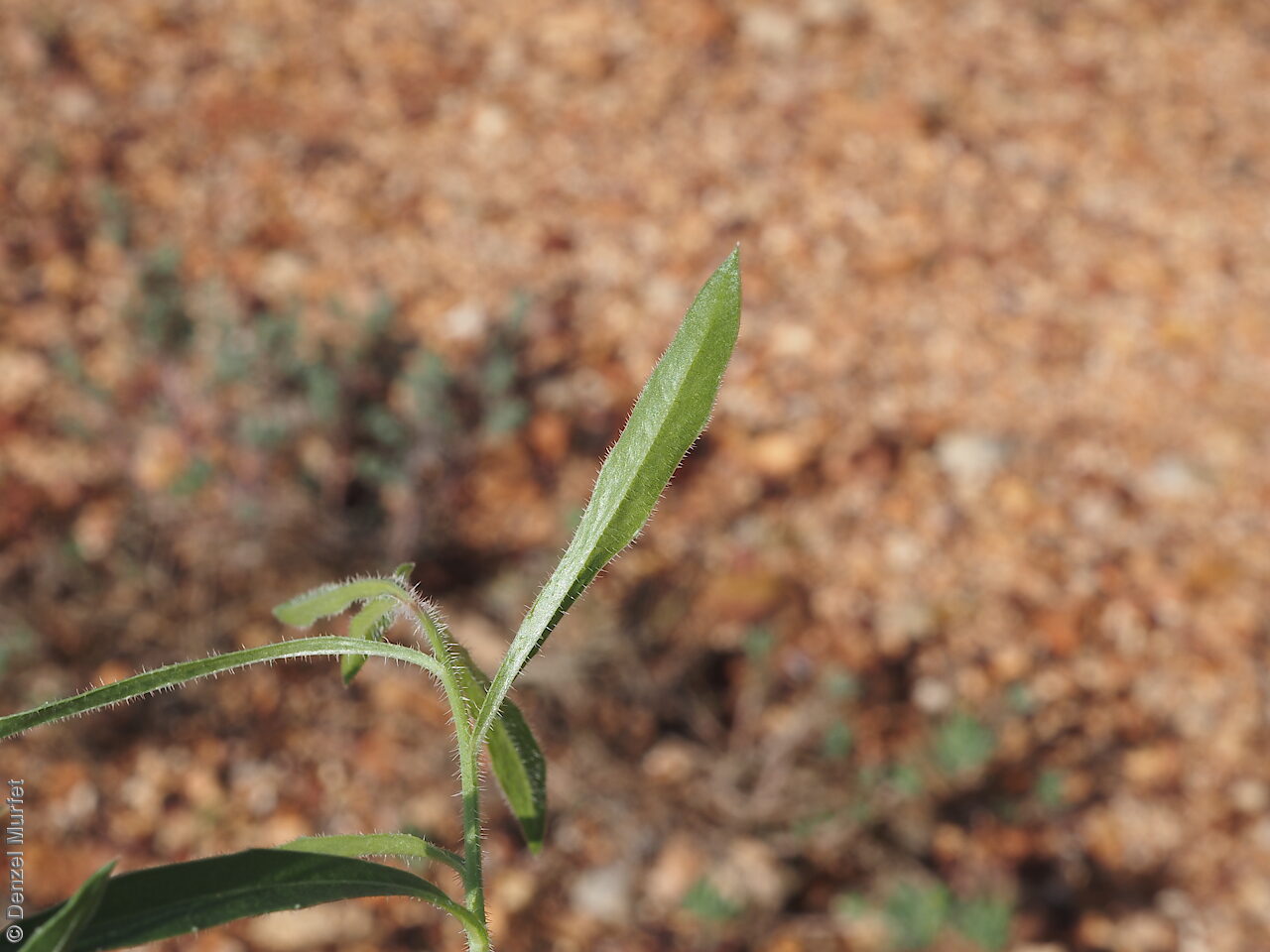
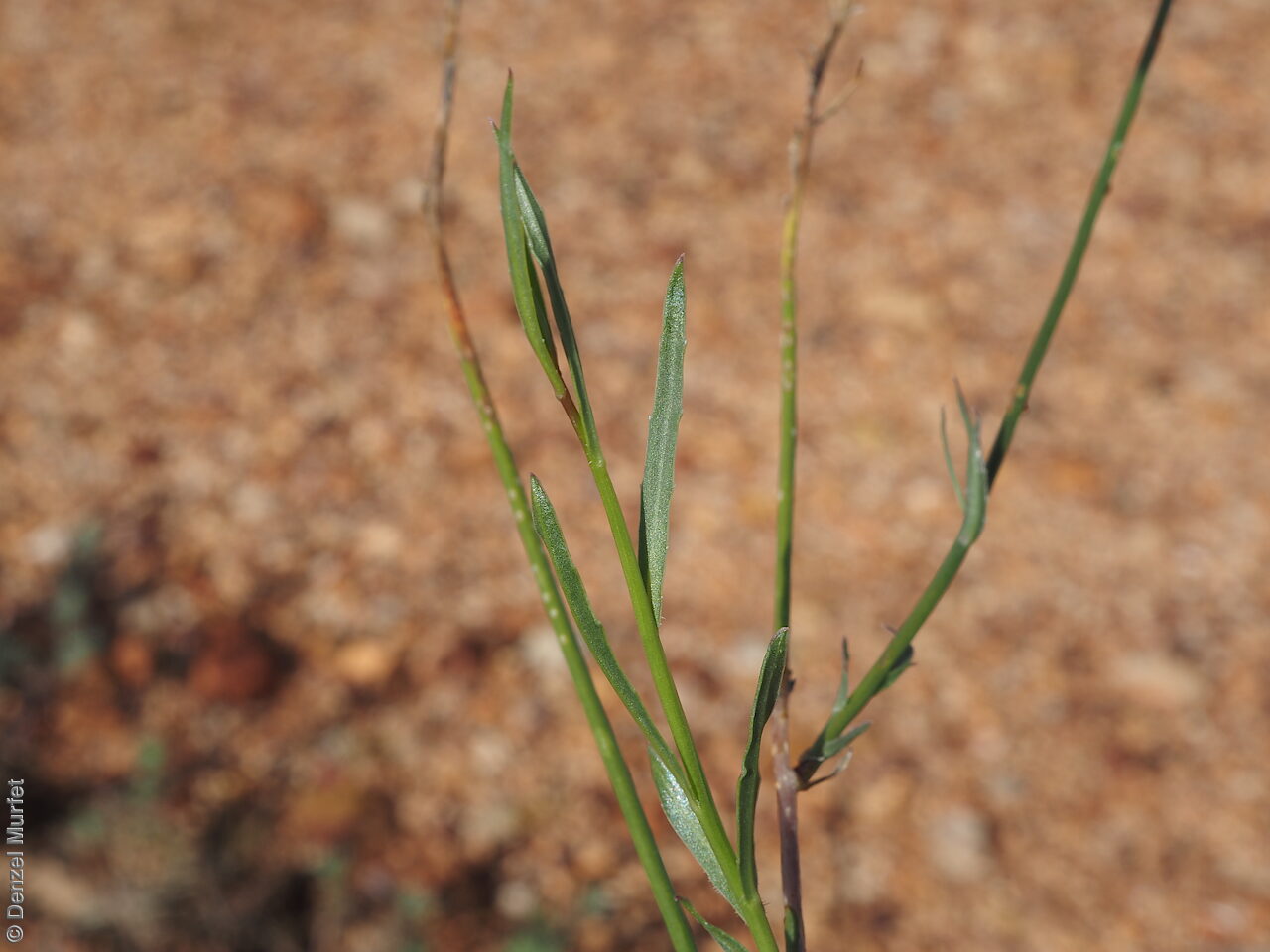
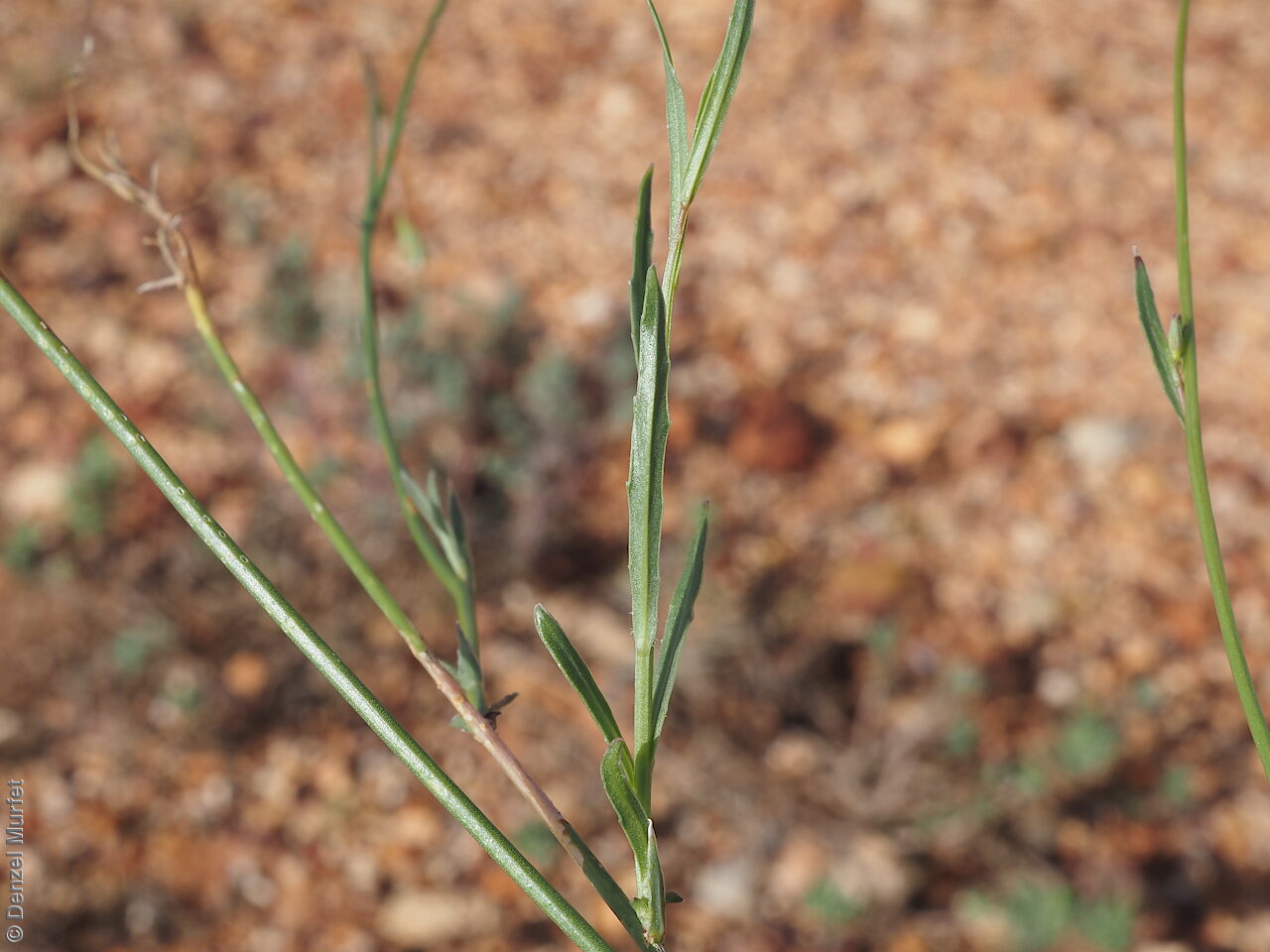
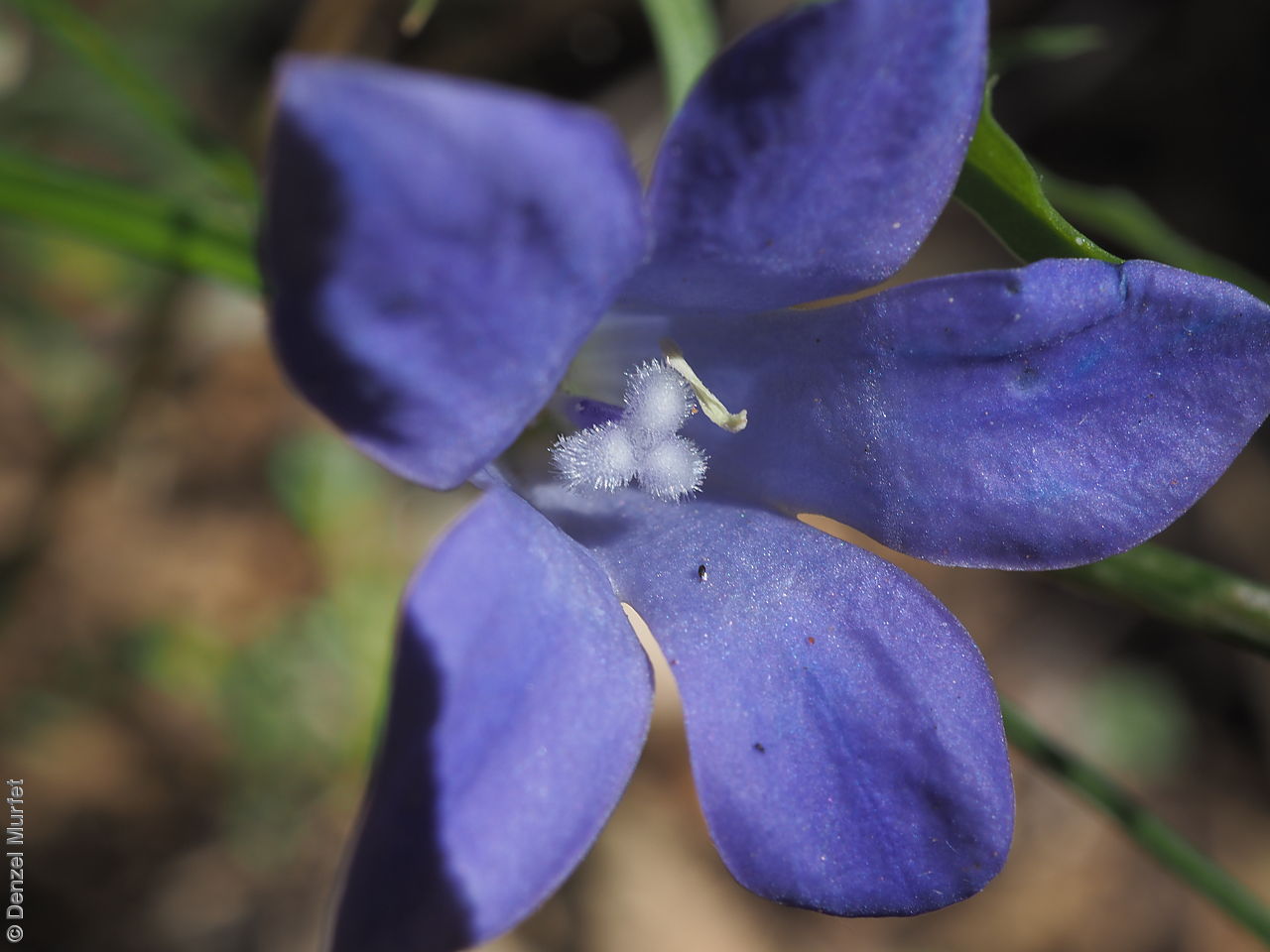
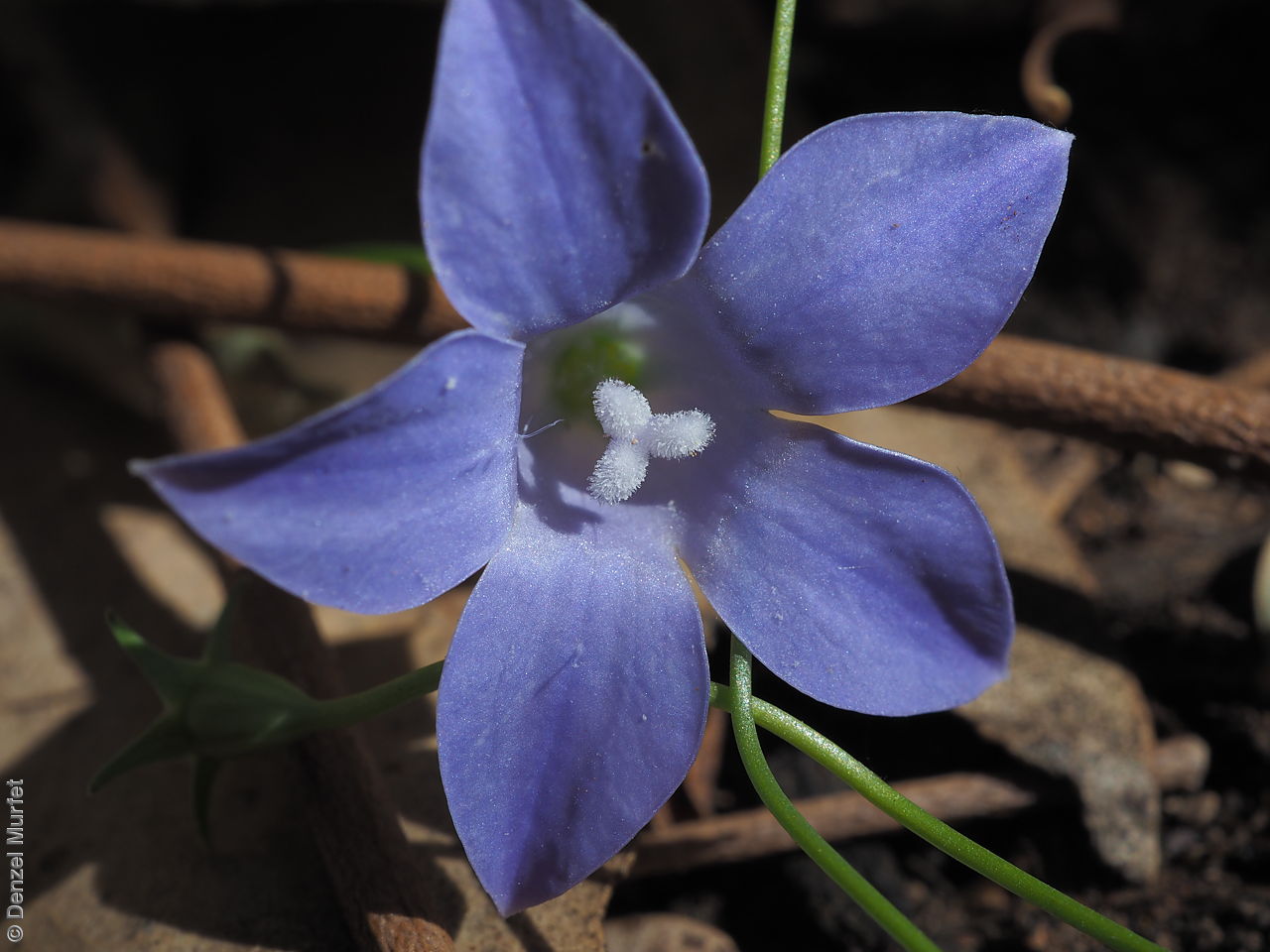
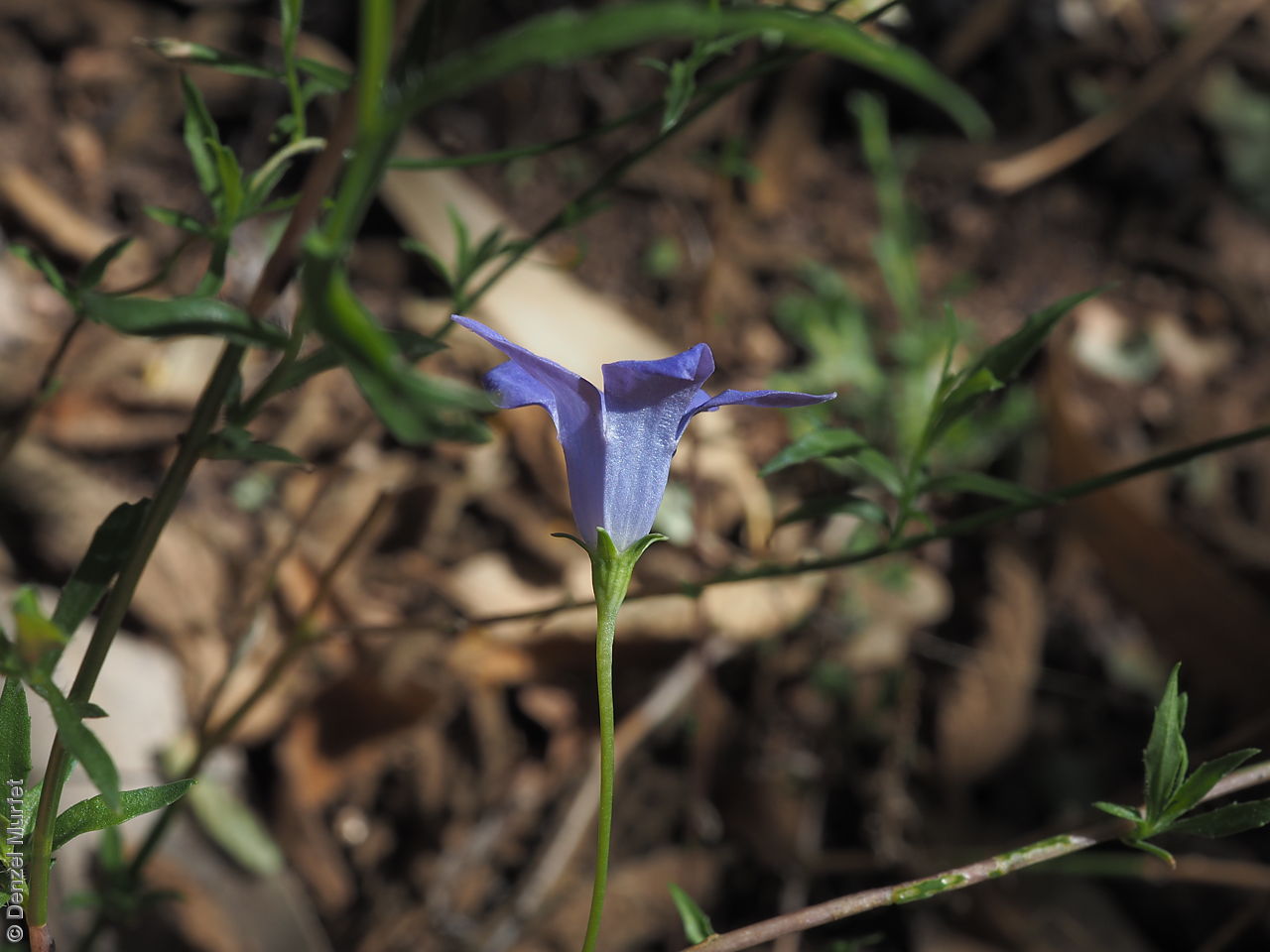
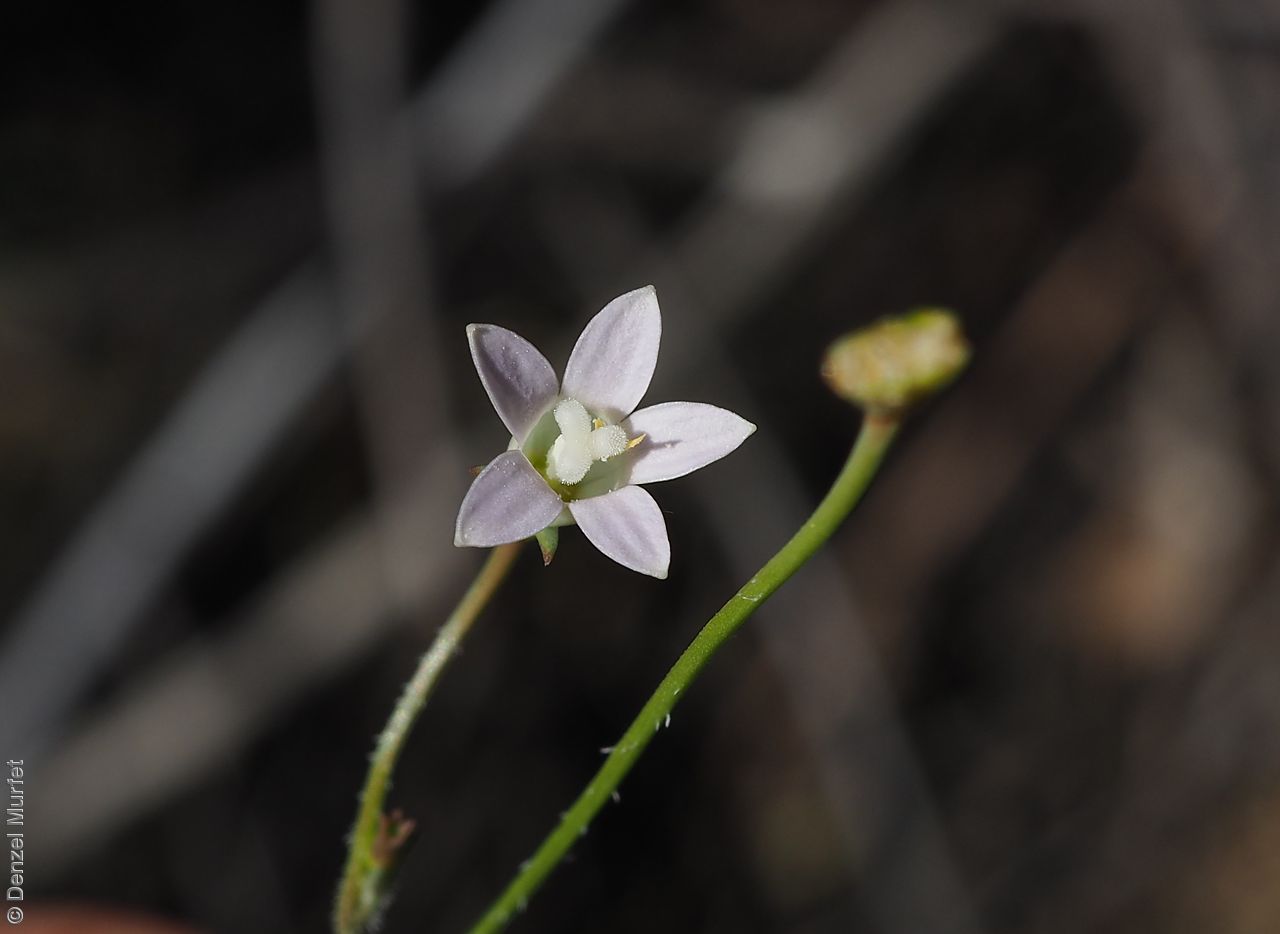
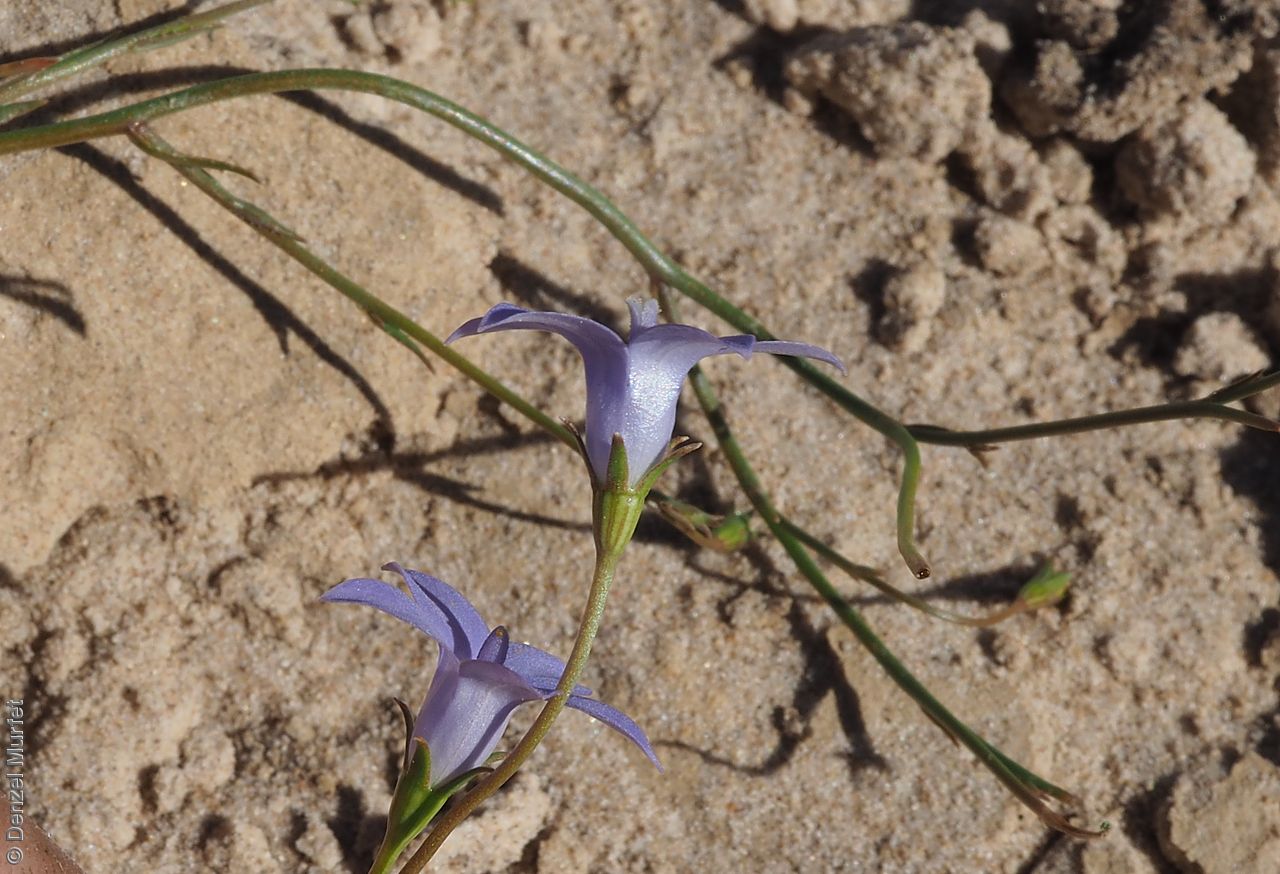
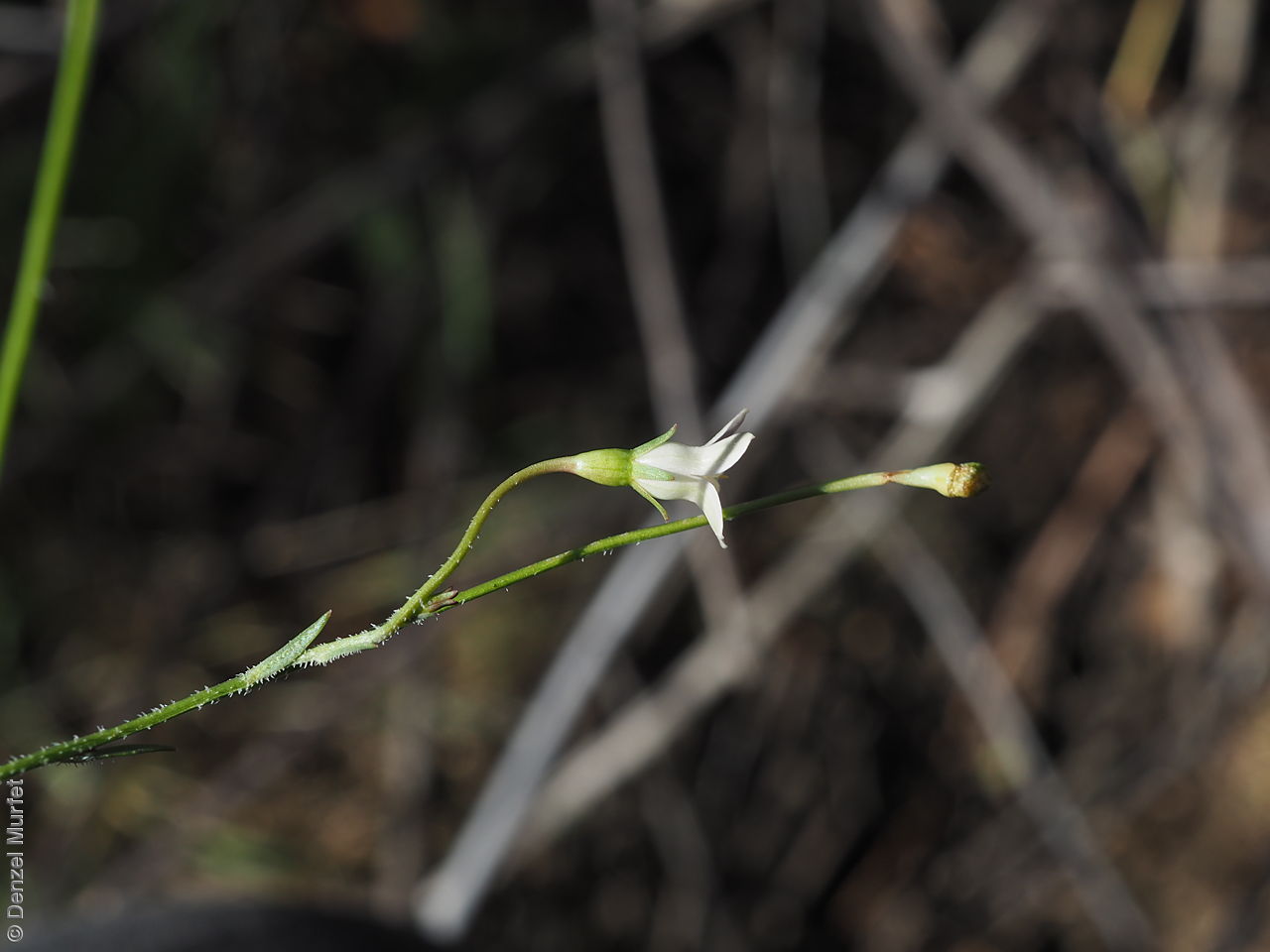
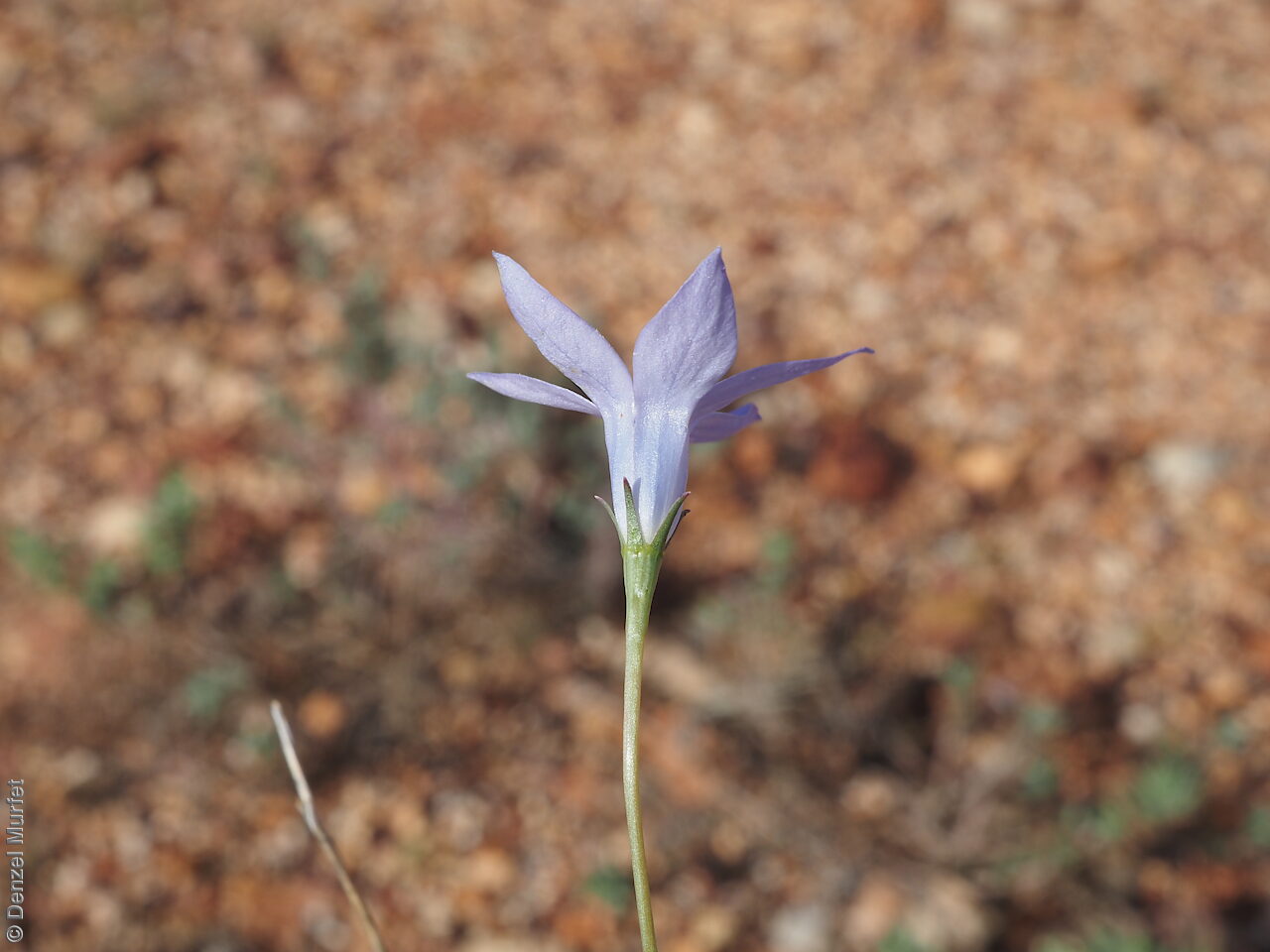
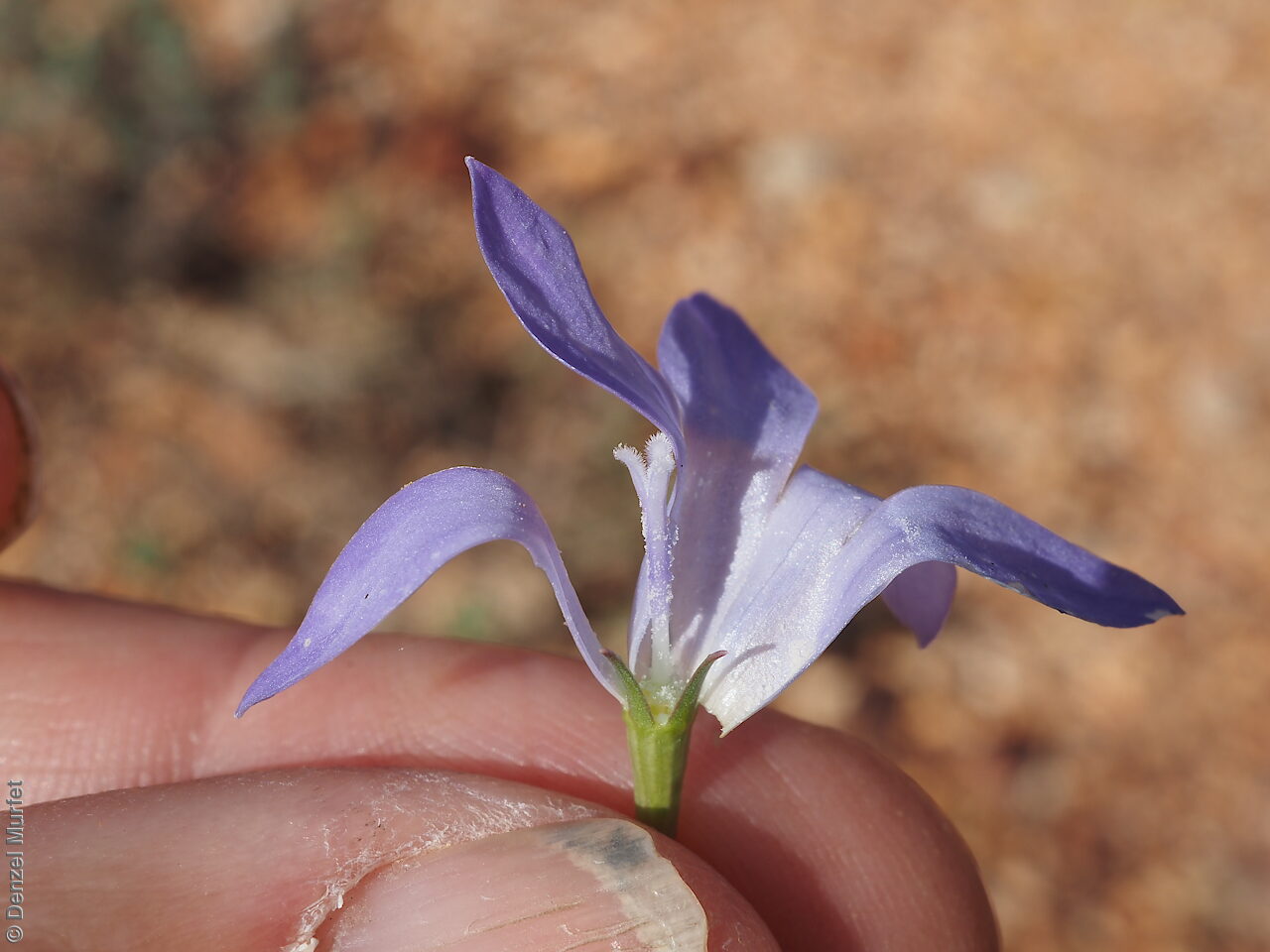
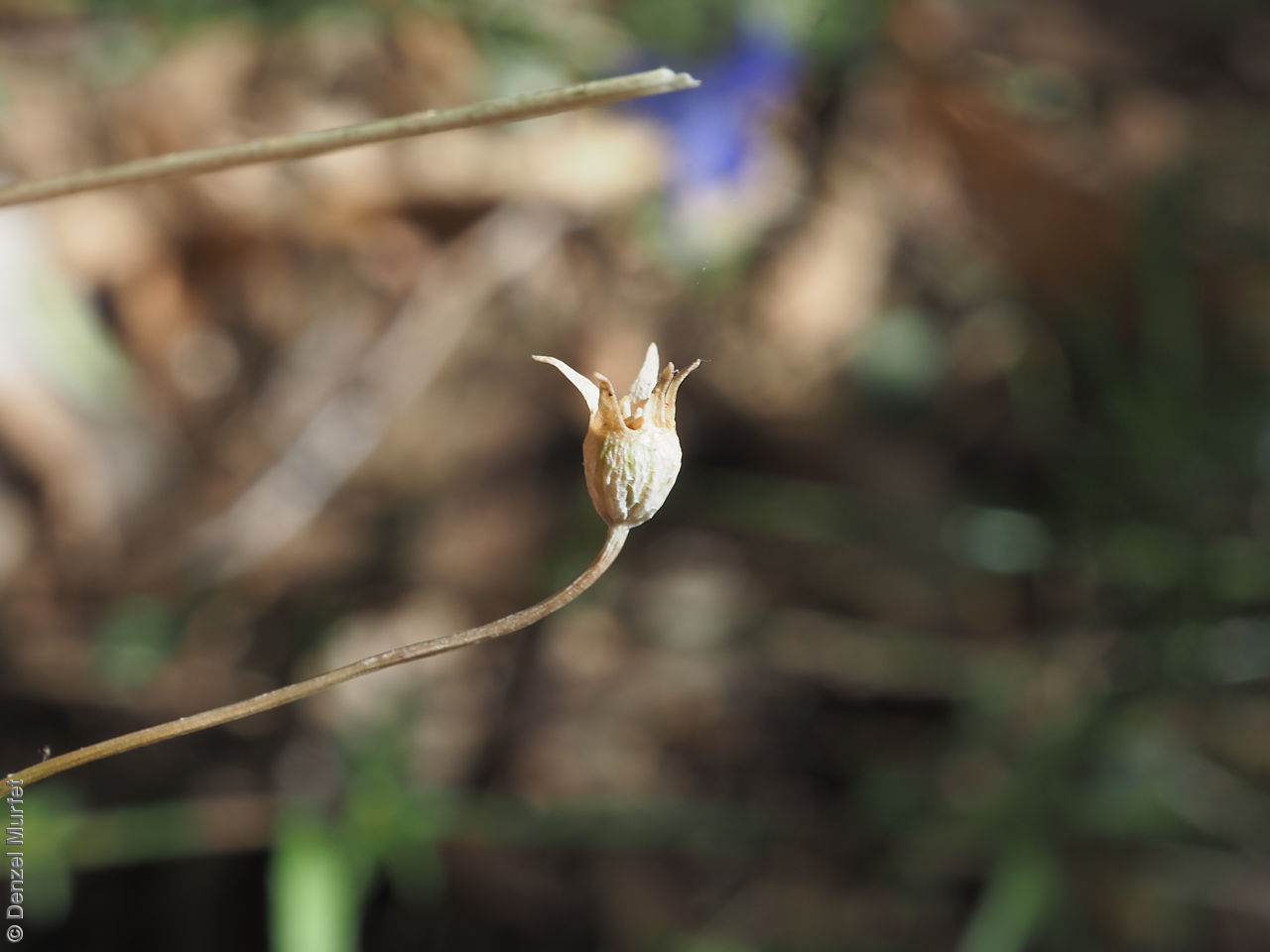
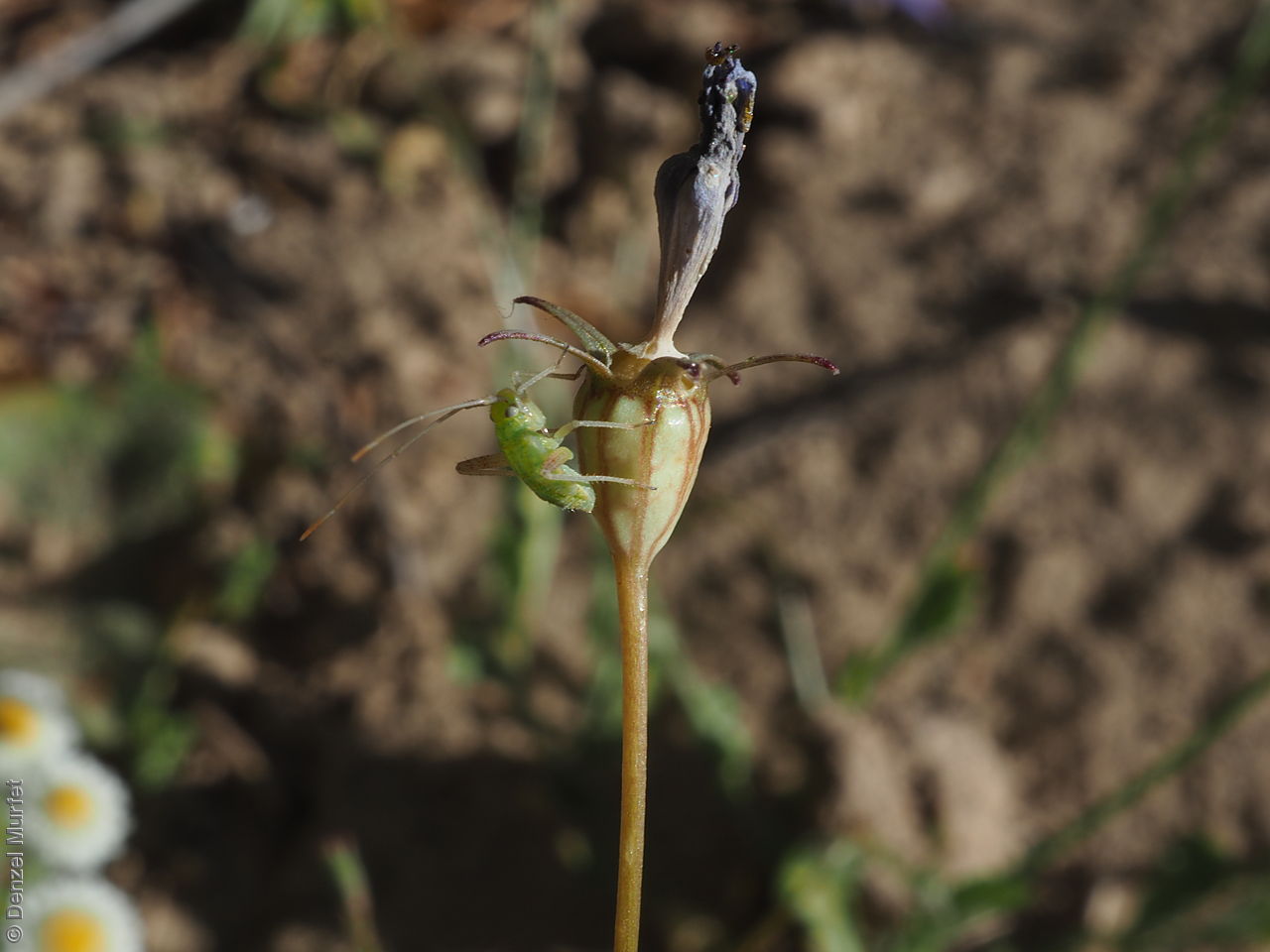
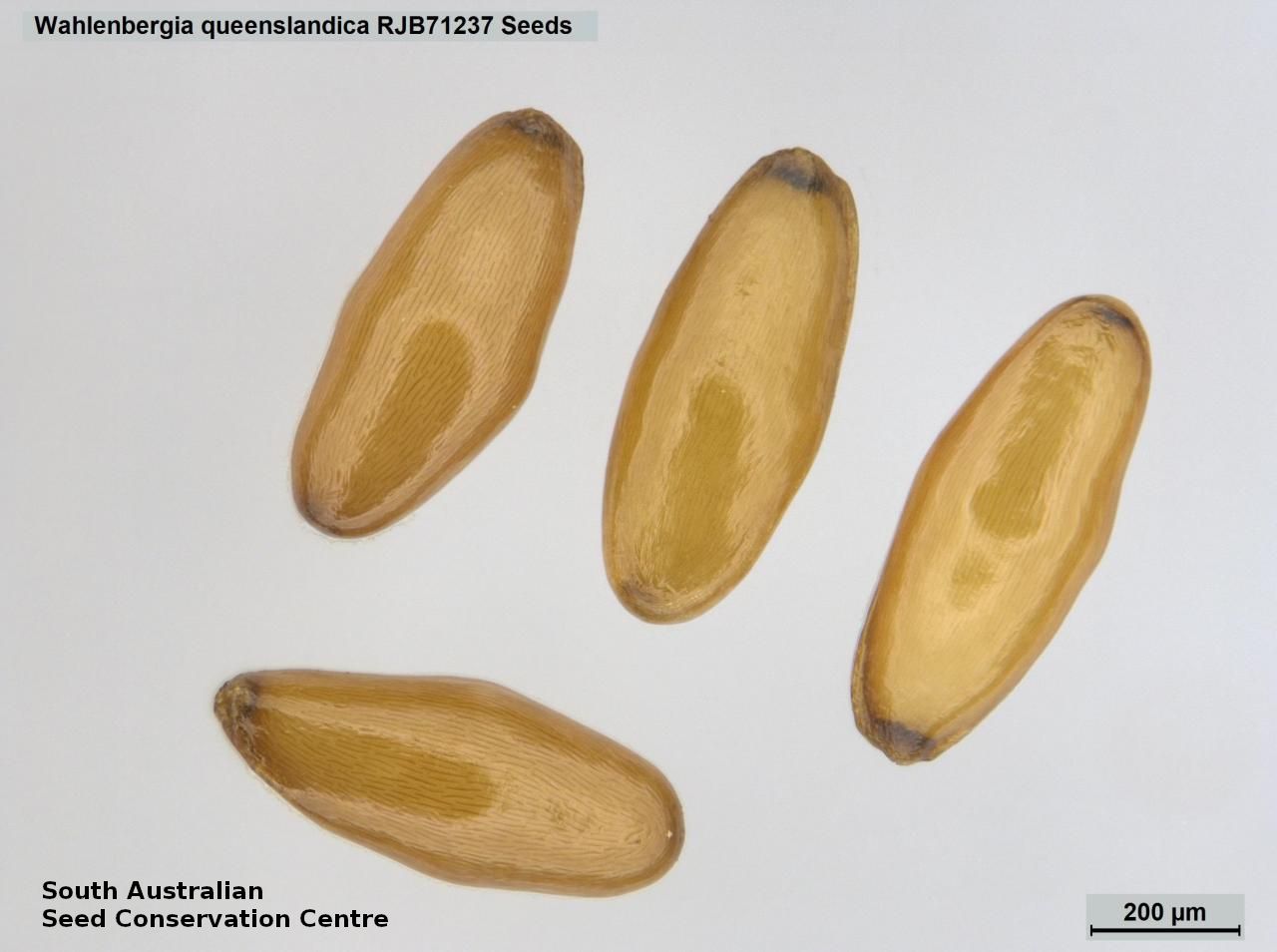
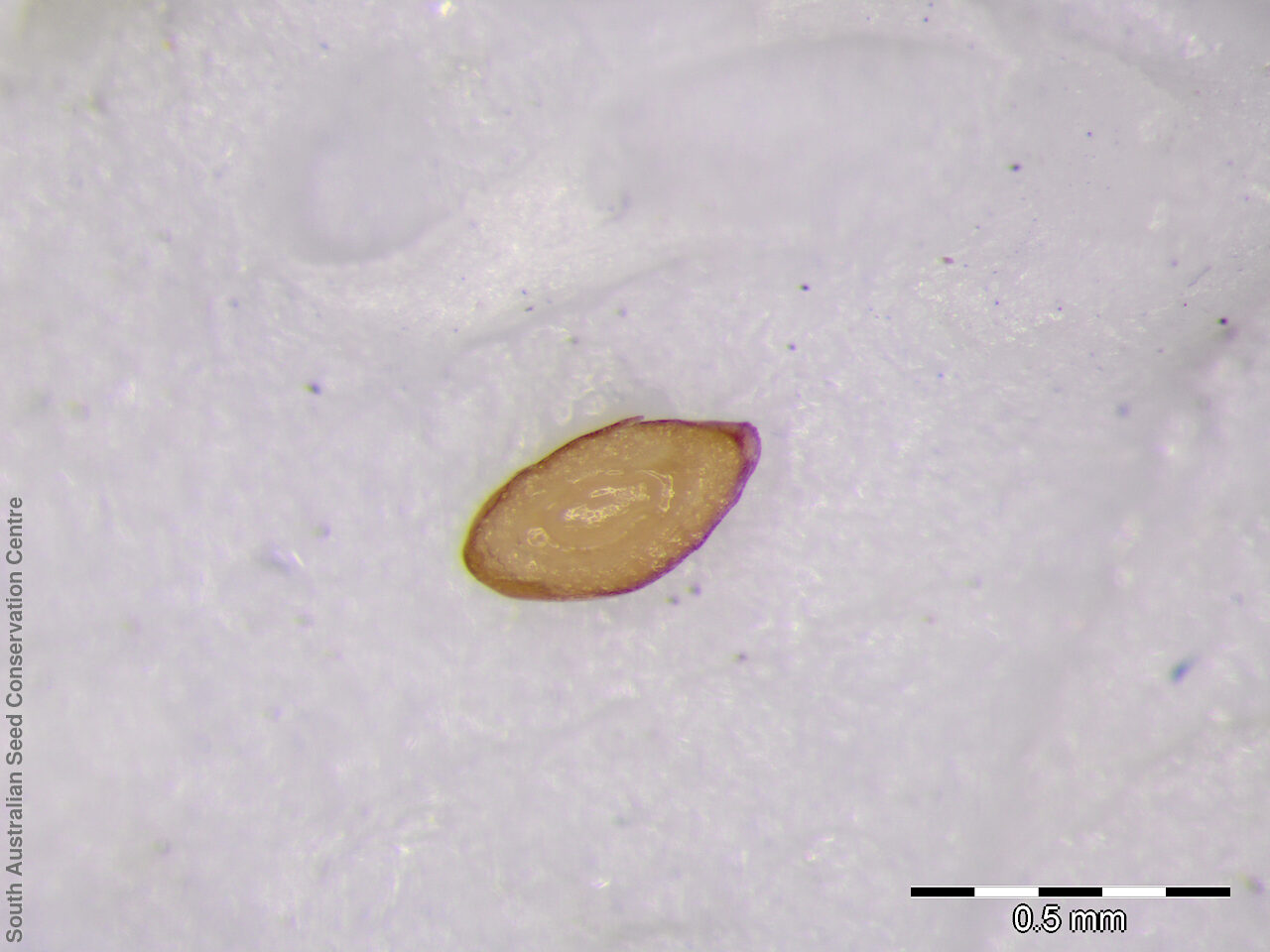
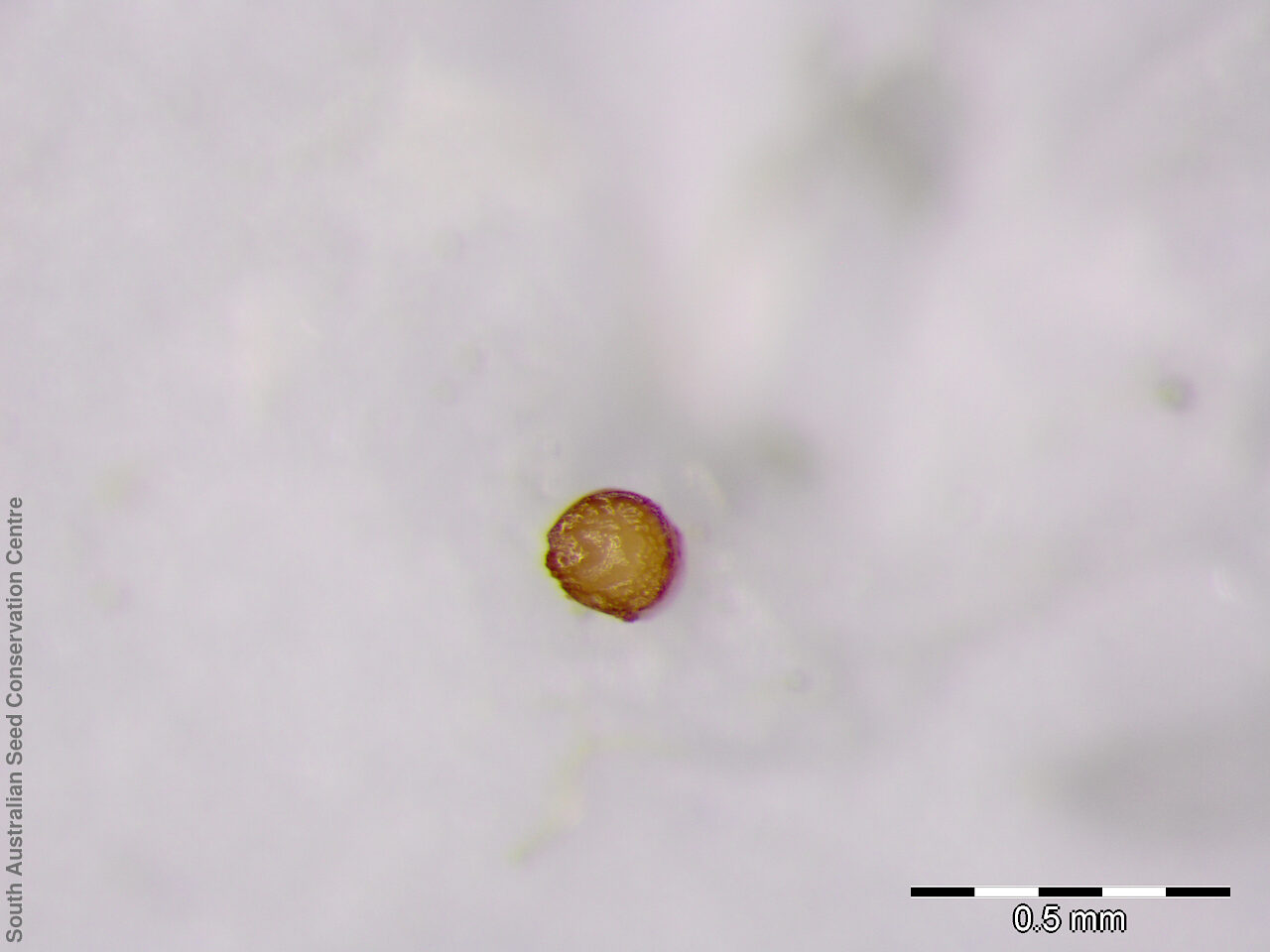

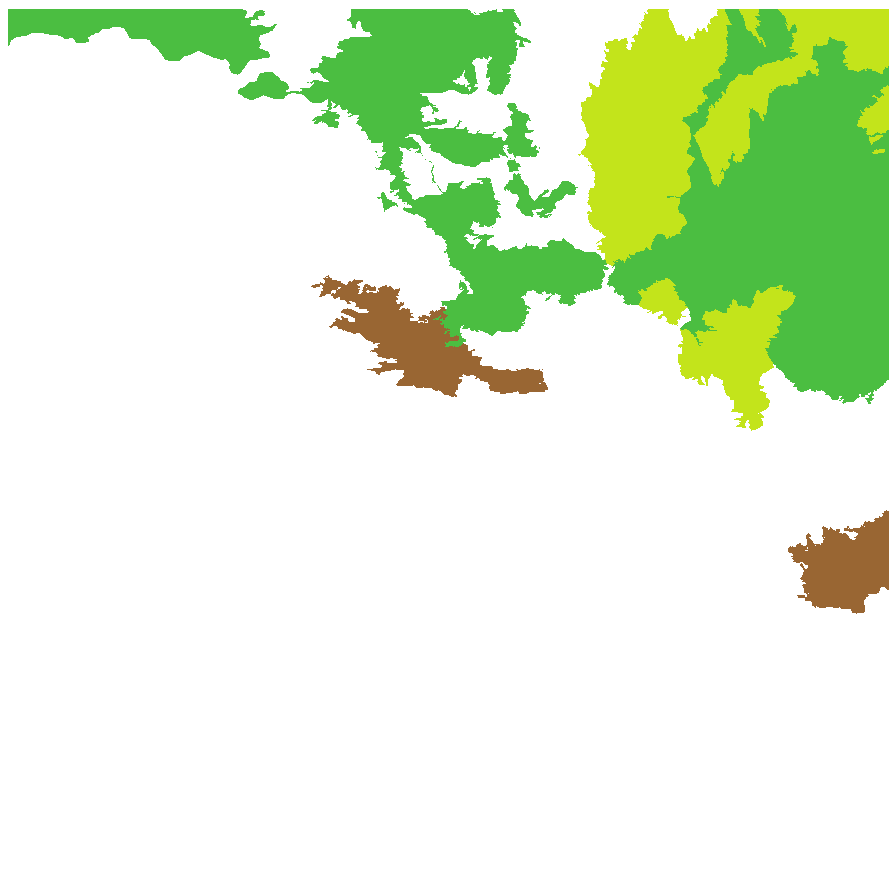
Botanical art
Etymology
Wahlenbergia named by H.A Schrader in honour of Georg G�ran Wahlenberg (1780-1851), a Swedish professor of botany. Queenslandica means of or from Queensland, Australia; referring to the location of the type specimen collected in 1958 from Grovesnor near Clermont in Queensland.
Distribution and status
Found in the northern part of South Australia, growing in open sites in a variety of vegetation types. Also found in Western Australia, Northern Territory, Queensland and New South Wales. Native. Common in South Australia. Common in the other states.
Herbarium regions: North Western, Lake Eyre, Eyre Peninsula
NRM regions: Alinytjara Wilurara, Eyre Peninsula, South Australian Arid Lands
AVH map: SA distribution map (external link)
Plant description
Perennial tufted herbs with a fleshy rootstock with stems to 90 cm high, upper parts glabrous, lower parts hairy. Leaves alternate or sometimes the lowermost opposite, to 60 mm long and 9 mm wide, obovate or oblanceolate, becoming linear up the stem, margins flat or sometimes undulate. Flowers terminal, blue, funnel-shaped with 5 narrow-triangular lobes, base often rather swollen in appearance. Flowers throughout the year. Fruits are brown capsule to 5 mm long. Seeds are tiny orange elliptic seed to 0.7 mm long and 0.3 mm wide. Seed embryo type is spatulate under-developed.
Seed collection and propagation
Collect seeds between January and December. Collect capsules that are maturing, drying and turning orange with hard seeds inside. Place the capsules in a tray and leave to dry for a week. Then rub the capsules gently with your hands to dislodge the seeds. Use a sieve to separate the unwanted material. Be careful as the seeds are very small. Store the seeds with a desiccant such as dried silica beads or dry rice, in an air tight container in a cool and dry place. From two collections, the seed viability were high, ranging from 80% to 85%.
| Location | No. of seeds (weight grams) | Number of plants | Date collected | Collection number Collection location | Date stored | % Viability | Storage temperature |
|---|---|---|---|---|---|---|---|
| BGA | 10,000 (0.21 g) | 50 | 4-Apr-2007 | RJB71237 Eastern | 19-Sep-2008 | 85% | -18°C |
| BGA MSB | 78,000 (0.97 g) 78,000 (0.97 g) | 100+ | 26-Sep-2008 | TST420 Lake Eyre | 20-Jul-2009 | 80% | -18°C |
Number of plants: This is the number of plants from which the seeds were collected.
Collection location: The Herbarium of South Australia's region name.
% Viability: Percentage of filled healthy seeds determined by a cut test or x-ray.